Jameh Mosque of Isfahan (Architecture, Reviews, Plan)
The Jameh Mosque of Isfahan, also known as the Friday Mosque, is one of Iran’s most significant architectural and historical landmarks. Located in the ancient city of Isfahan, this mosque stands as a testament to centuries of Islamic art and culture. Recognized as a UNESCO World Heritage Site, the mosque is not only a place of worship but also an emblem of the city’s rich heritage. Visitors and historians alike are drawn to its intricate designs and the layers of history embedded in its walls.
This mosque represents a continuous evolution of architectural styles from various Islamic dynasties. Its complex structure reflects the artistic achievements and religious devotion of the time. The mosque’s grandeur lies in its simplicity and the harmony between its architectural elements, making it a masterpiece of Islamic architecture.
About Jameh Mosque of Isfahan
Visiting the Jameh Mosque of Isfahan is one of the top things to do in Isfahan, Iran. The Jameh Mosque of Isfahan is a sprawling complex that spans over 20,000 square meters, making it one of the largest mosques in the world. Its location in the heart of Isfahan has made it a focal point for religious, social, and cultural activities over the centuries.
The mosque’s design integrates various elements of Persian, Seljuk, Mongol, and Safavid architectural styles, offering a unique experience for visitors.
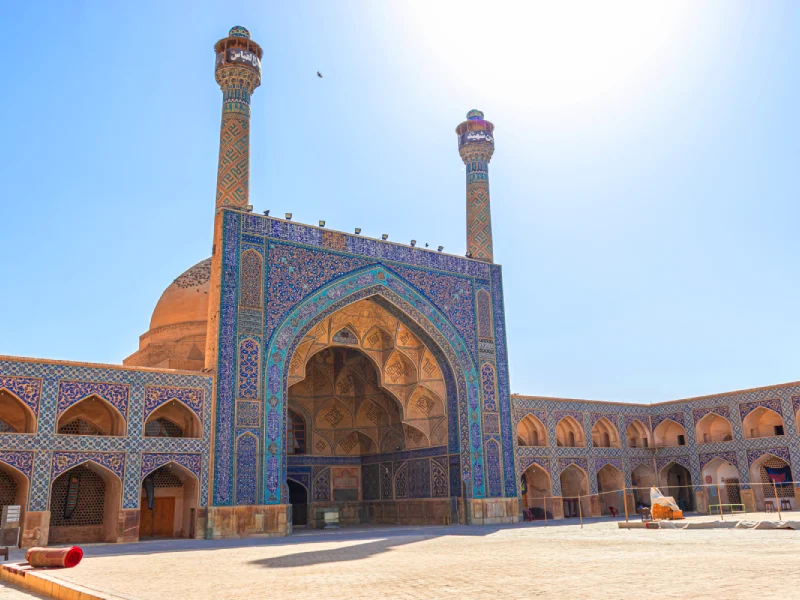
This iconic structure has undergone numerous renovations and expansions since its inception, each contributing to its current form. The mosque’s four-iwan courtyard design has inspired countless Islamic structures worldwide. Its towering domes, intricately carved mihrabs, and decorative tilework are a testament to the craftsmanship of Iranian artisans through the ages.
Jameh Mosque of Isfahan History
The Jameh Mosque of Isfahan boasts a rich history that spans over a millennium. It is believed to have been initially constructed on the site of a Zoroastrian fire temple and later transformed into an Islamic mosque following the spread of Islam in Iran. Each ruling dynasty left its mark on the mosque, resulting in a harmonious blend of architectural styles.
Throughout its history, the mosque has witnessed periods of prosperity and decline. Despite invasions and natural disasters, the mosque has been meticulously restored and preserved.
Its historical significance is not only limited to its architecture but also extends to its role as a hub for intellectual and religious activities during different eras of Islamic history.
When was Jameh Mosque of Isfahan built?
The original structure of the Jameh Mosque of Isfahan dates back to the 8th century during the Umayyad Caliphate. However, much of what stands today was constructed during the Seljuk dynasty in the 11th and 12th centuries.
The Seljuks expanded the mosque significantly, adding its iconic four-iwan layout and central courtyard. Later dynasties, such as the Safavids, also contributed to its embellishment.
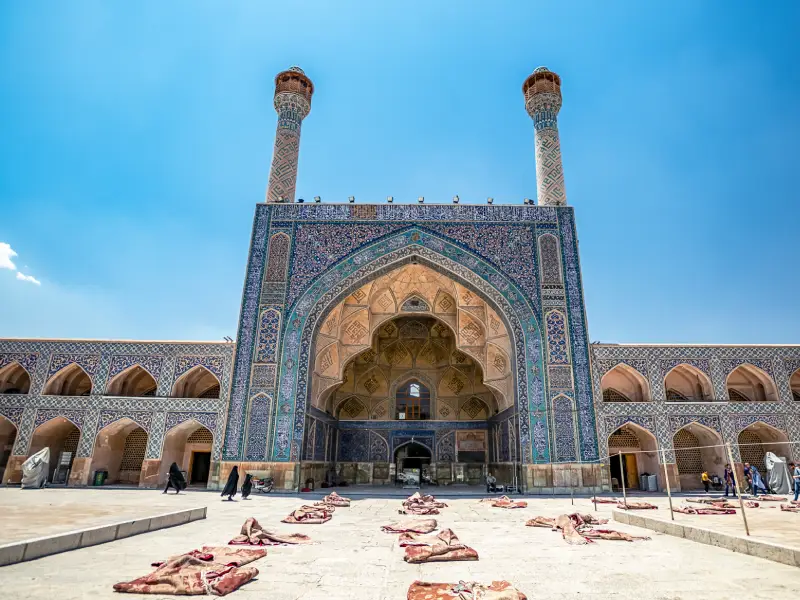
The mosque’s continuous development over centuries makes it an architectural timeline, showcasing the evolution of Islamic art and design. Its adaptive use of space and structure reflects the changing needs and aspirations of the communities it served.
Who built the Jameh Mosque of Isfahan?
The Jameh Mosque of Isfahan was built and expanded by various rulers and dynasties. The Seljuk dynasty, particularly under the reign of Sultan Malik Shah and his vizier Nizam al-Mulk, played a significant role in shaping its current form.
The Safavid dynasty also contributed to its restoration and beautification, ensuring its status as a symbol of Persian-Islamic identity.
The collaborative efforts of numerous architects, artisans, and laborers over centuries culminated in the mosque’s current grandeur. It is a monument to collective creativity and dedication, with each era adding unique elements to its design.
Why is it called the Friday Mosque?
The Jameh Mosque of Isfahan is referred to as the “Friday Mosque” because it was traditionally the site of Friday prayers, a significant weekly congregational prayer in Islam.
These prayers are often led by a prominent religious leader and attended by large gatherings, making the mosque a central point for the community.
The term “Friday Mosque” is commonly used for major mosques in Islamic cities where the weekly sermon, or “Khutbah,” is delivered. The Jameh Mosque of Isfahan’s size and central location made it ideal for fulfilling this role.
Jameh Mosque of Isfahan Reviews
Visitors to the Jameh Mosque of Isfahan often describe it as a breathtaking blend of history, art, and spirituality. Many are captivated by its intricate tilework, grand domes, and the serene atmosphere of its courtyard.
The mosque’s unique architecture, with its harmonious proportions and artistic details, leaves a lasting impression.
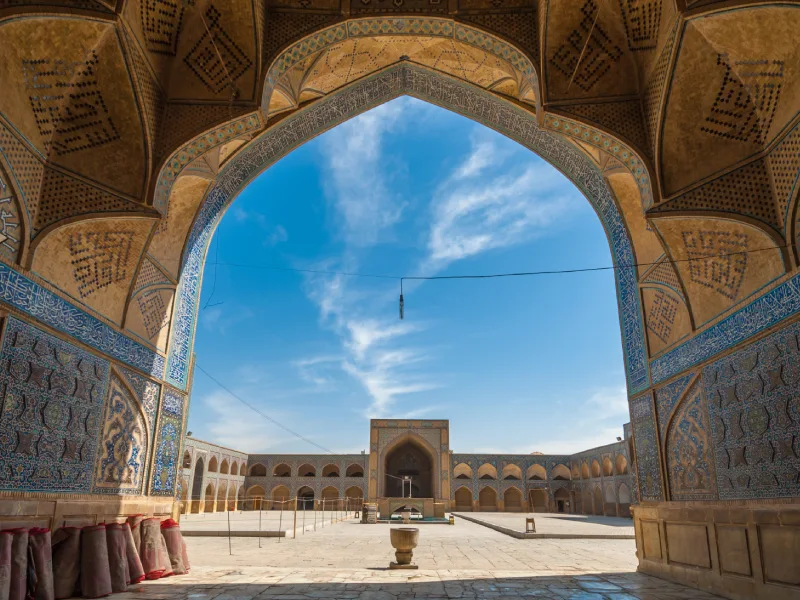
Tourists and historians alike praise the mosque for its ability to transport visitors back in time. The combination of different architectural styles provides a visual narrative of Iran’s Islamic history.
Online reviews often highlight the knowledgeable local guides who bring the mosque’s history and significance to life for visitors.
Jameh Mosque of Isfahan Architecture
The architecture of the Jameh Mosque of Isfahan is a masterpiece of Islamic design. Its four-iwan layout, with a central courtyard flanked by monumental iwans, is a hallmark of Persian-Islamic architecture.
The mosque’s domes, particularly the Nizam al-Mulk Dome and the Taj al-Mulk Dome, are engineering marvels, showcasing advancements in structural design.
The intricate muqarnas, or stalactite-like decorations, adorn the mosque’s iwans and ceilings, adding depth and texture to its design.
The use of geometric patterns and calligraphy throughout the mosque highlights the skill and creativity of its craftsmen. The interplay of light and shadow within the mosque’s interiors creates a tranquil and meditative ambiance.
Jameh Mosque of Isfahan Plan
The Jameh Mosque of Isfahan’s architectural plan is centered around its vast courtyard, which serves as the focal point of the structure. Each of the four iwans surrounding the courtyard leads to different sections of the mosque, such as prayer halls and educational spaces. This design allows for both functionality and aesthetic appeal.
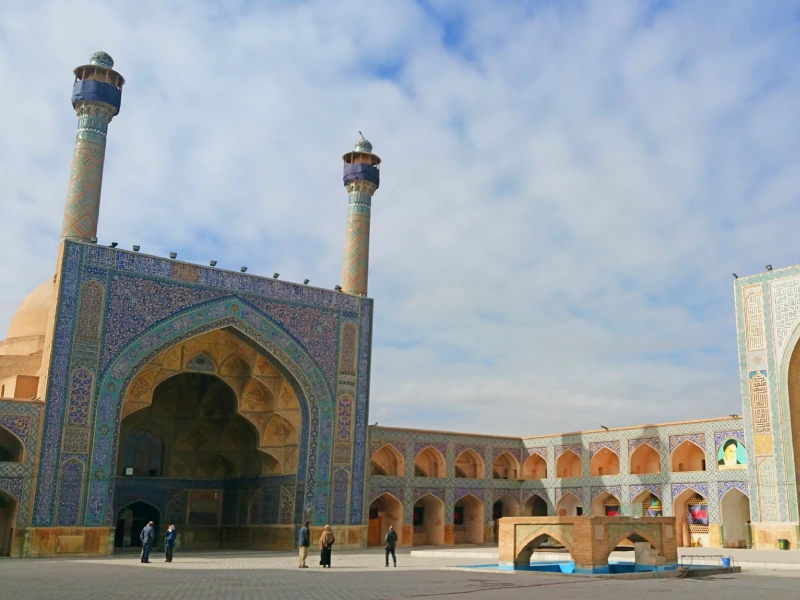
The mosque’s layout reflects the Islamic principles of symmetry and balance. The placement of its domes, minarets, and mihrabs has been carefully considered to enhance the spiritual experience of worshippers.
The adaptive use of space over centuries has made the mosque a versatile and enduring symbol of Islamic architecture.
Jameh Mosque of Isfahan Location
Where is the Jameh Mosque of Isfahan located? The mosque is situated in the historic center of Isfahan, Iran, near major landmarks and bustling bazaars (Location on map). Its central location has made it a hub of activity for centuries, connecting the mosque to the cultural and economic life of the city.
The surrounding area is rich in history, with narrow alleys and traditional markets that reflect the charm of old Isfahan. Visitors can easily access the mosque from other parts of the city, making it a must-visit destination for those exploring Isfahan’s heritage.
Last Words
The Jameh Mosque of Isfahan is more than just a place of worship; it is a living museum of Islamic architecture and history. Its intricate designs, historical significance, and spiritual ambiance make it a treasure trove for enthusiasts of art, history, and culture. Whether you are a tourist, a historian, or a devotee, the mosque offers a unique and enriching experience.
By preserving and celebrating the Jameh Mosque of Isfahan, we honor the creativity and dedication of those who built it. This iconic structure continues to inspire awe and admiration, standing as a testament to the enduring legacy of Persian-Islamic art and architecture.
Are you planning to travel to Iran and looking for an Iran resort? Consider Matinabad Eco-resort.

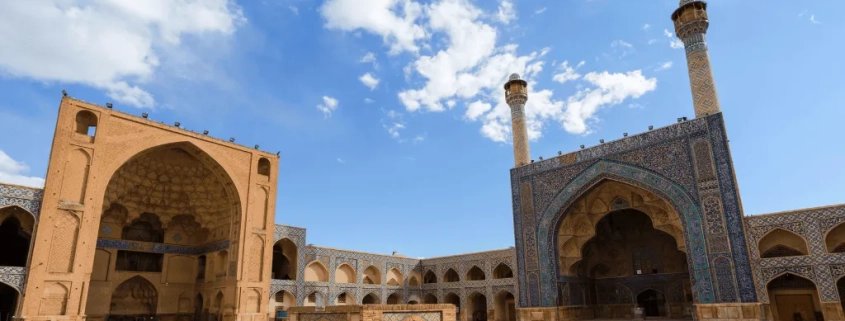



Leave a Reply
Want to join the discussion?Feel free to contribute!